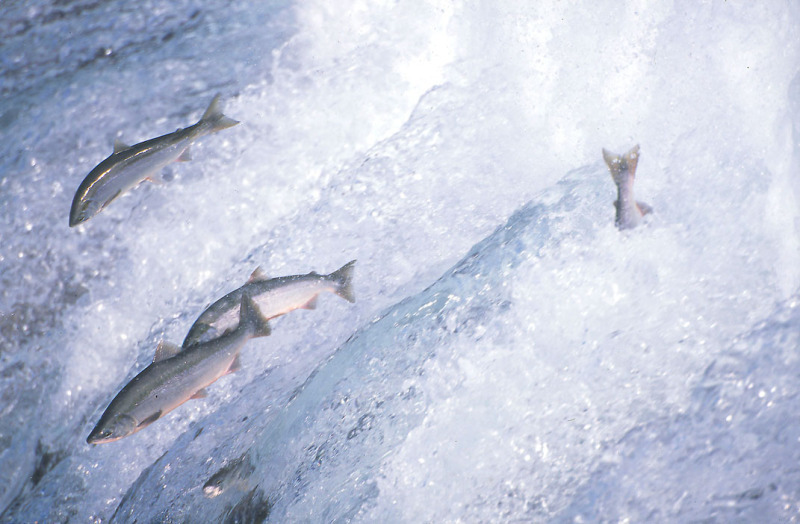
Waiting out the fog in Kaktovik, Alaska.
A low ceiling keeps us on the ground again in the morning
. The winds have subsided and the temperatures have risen, bringing with them some fog. The crew is getting restless, as everyone would rather be out on the ice and we are six people living in a relatively small space. Good coffee, good cooking and great attitudes make a huge difference. George and I take advantage of the additional time to connect to the local high speed internet: literally sitting outside the village school in our truck sharing their wireless system before the school day begins. A chance to at least send and receive a few emails and see what is happening in the world.
We also have a chance to reflect on the season to date and put this year’s events in the context of the project’s long term data set. The most potentially striking observations this season and last, is the decreased encounter rates of older females, sows with yearlings, and sub-adult (recently independent) bears of either gender. Some analysis by USGS will be necessary to say if this is actually a trend of any significance, but it is a troubling observation and fits all too well with the declining Southern Beaufort Sea (SBS) population projection. Finding individual bears in poor condition in any one year is not necessarily significant. Bad years happen even when times are generally good for wildlife, and all age classes of bears sometimes die for a variety of reasons, especially dependent young.
The fog lets up, and we take advantage of the window to head back up in the air and out onto the sea ice. After two days of winds gusting to 35 knots, we are surprised by the lack of ice movement. We had expected, and hoped, to see new leads as this can concentrate bear hunting activity – but no such luck. The winds have scoured some pans down to glare ice as well. In short order we encounter five ringed seals hauled out in close vicinity to one another, more than we had seen in over a week and a welcome sign.
As we make our way to the north, we catch up to the fog and are turned eastward. Our pilot happens to see a set of tracks crossing a pressure ridge, and we are off in pursuit. Within five minutes we have a large male in sight, and he seems completely unconcerned by our presence. This behavior is not unusual for mature breeding males as they have few peers on the sea ice. Once we have him safely sedated, we discover this bear is a well known to us from previous captures. He is the largest bear weighed by scale in the Alaskan Beaufort at 590 kg in the fall of 1999 and he was born in the winter of 1983. Today he weighs in at 480 kg, a respectable spring weight for such a big guy, and the oldest bear we have captured this season. He is in great condition and has recently eaten as evidenced by a bulging tummy.
We depart to the SE and hunt towards the two dens we discovered previously along the coast, but it is not long before we cut another fresh set of tracks. This set also leads us directly to the track maker – a younger lone male, and also one I have seen before very near this location. I last caught this bear in 2007 during the filming of a CNN/Animal Planet piece with Jeff Corwin. At the time, this bear was only 6 years old, but he was determined to court a much older and larger bear who stood up and really let him have it. No harm was done, other than perhaps his ego! It was nice to see him as a much larger 8 year old. He is now tall, lanky, and lean as if from a recent growth spurt. He is also in reasonable condition for a male this time of year. The light winds we had all day suddenly stop and we have a beautiful evening to process and sample the last bear of the day. We land about half past seven, unload, hang and clean the gear, grab a quick dinner and enter the data. It is nearly midnight when I finish the last few tasks, print the labels and head up to bed.
WWF’s polar bear coordinator, Geoff York, keeps up his field knowledge with trips out onto the ice to check on the condition of the bears. This year, he is keeping a daily blog of his experiences over two weeks. Keep visiting this blog for regular updates, photos, and maybe some video too, and live the life of a polar bear biologist.







